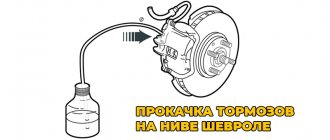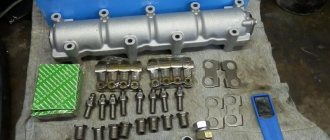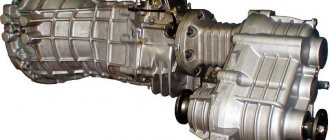Chevrolet Niva Status Quo › Logbook › Replacing the TPS and cleaning the throttle valve.
And so, we will continue the cycle of repairs.
Even in the summer, I periodically began to notice a freezing speed at idle or a smooth increase at idle. But it appeared rarely and was reset by sharply pressing the pedal. In the fall, this problem began to appear more and more often. I called all the stores in Yaroslavl, but nowhere was there a contactless TPS produced by the Kaluga Avtoelectronics plant. I had to order it online using code 36.3855. Of course, I was very surprised that there was no good sensor in the whole city. Today the sensor arrived and I decided to install it right away.
The sensor came without a box - in a regular package, but the markings are necessary.
I decided to change it by removing the throttle valve, at the same time I decided to wash it and look at the IAC. We remove the corrugation and remember the position of the heating hoses. For some reason, coolant did not flow from the hoses, contrary to expectations.
I can’t say that the unit required urgent washing, but since I had planned it...
The acoustic pipe was in place and intact, although I doubted it. I got him out of harm's way.
Then it's a matter of little things: remove the sensors, spray carburetor cleaner, install the sensors. Arzamas Rikor came from the factory. We unscrew it and put it aside, I decided to rearrange the foam rubber - let it be
I took out the IAC - the rod was a little covered in oil, so I sprayed it with carb cleaner.
Next, I thoroughly washed the throttle itself.
And put all the sensors in place
I'm starting it up. The idle speed floats, the rpm is about 1300. I initialize the ECU, start it again and everything is fine. I took it for a ride and everything seemed fine. It seemed that the response to the gas became clearer. Now I'll keep an eye on it - I hope the revs won't hang up anymore.
PS: on my blog you can see beautiful photographs of Uglich, for example. Come in and subscribe!
Source
Symptoms of a malfunction and how to fix them
The throttle valve mechanism has a high safety margin and is almost not subject to wear. Problems arise due to contamination of the unit. Atmospheric air, which passes through the throttle in large volumes, is cleaned by an air filter.
This is interesting: How to clear the lambda probe error when the sensor is on
However, tiny particles of dust remain in it, which settle on the parts of the mechanism. The process is aggravated by small splashes of oil that penetrate along with crankcase gases.
A coating forms on the walls and damper, which prevents the damper from closing completely or interferes with its smooth operation. Clogged channels of the unit create air resistance, as a result of which engine power decreases.
Signs of remote control contamination:
- Unstable engine operation at low speeds.
- Jerking when driving at low gas.
- Problems starting the engine.
- Power drop.
To eliminate the problem, you need to clean the throttle valve. This can be done with a special aerosol that dissolves plaque on the inner surface of the throttle assembly.
Chevrolet Niva › Logbook › Cleaning the throttle and crankcase ventilation + various little things, 68,690 km.
All the best! The car doesn't let you get bored. 1. Oil consumption is observed in the engine. Since the replacement (about 3500 km ago) I have added about 200 ml. Engine above 3-3.5 thousand rpm. I'm not twisting. Now filled with ZIC X9 FE 5W-30. I don’t see any point in sinning with this oil yet. This is not the first time it has been poured into other cars and there have never been problems with its consumption. There are no obvious leaks on the motor. I decided to start with preventive measures. I removed and washed the throttle valve (there is this one, art. 2123-1148010), the idle air valve (it costs this one, 21203-1148300-03), the receiver, the engine breather, replacing the large one (art. 2123-1014240) and the small one (art. 2123- 1014056) pipes. At the same time, replace the breather cover gasket (art. 2101-1014215), the receiver gasket (art. 2123-1008055-01), the receiver gasket on the stud (art. 2123-1008033), the throttle valve gasket (art. 2112-1148015). Actually, the main dirt was on the idle air valve. The rest of the parts are more or less clean. After assembly, starting the first time, the idle speed became even more stable (previously, judging by the BC readings, the speed stayed at 800-840, now it very rarely drops to 800, mostly staying at 840 rpm). The engine response remained at the same level. 2. The valve in the expansion tank cap is stuck again. I assembled one from three lids. I took the insides from a cover produced by “Avtopribor” (art. 2108-1311065-01). I noticed that the three holes on the Autodevice cover for air outlet from the tank have a diameter of 3.5 mm. On all other covers 1.5-2 mm. As a result, I adjusted the plug to a pressure of 0.5 kgf/sq.cm. In order to avoid problems with the plug, there are thoughts of switching to a tank from Renault Logan (analog, Meyle tank with a lid, art. 16142230000, 847 rubles, not such a big expense). 3. Regarding HBO. The system works, everything is fine, I like everything. Consumption on the highway is 11.5 liters in the city - about 13 liters. Strange, but less than with gasoline. The only thing is that the idle speed sometimes fluctuates. Moreover, when running on gasoline, there are no problems with idling. One of these days I will go to the HBO installers. I’ll update the post based on the results. For convenience, I moved the HBO button to the damper control panel.
Update dated March 16, 2021. I went to the gas equipment installers. Connected a computer with software. The HBO training period (after installing the equipment you need to drive 100 km on gasoline) went well. We slightly adjusted the map manually and the idle speed is now normal at 840, sometimes 880 rpm. Good luck on the roads!
Source
TPS design
Two types of throttle position sensors are available - contact type (film-resistive) and non-contact (magnetoresistive).
In sensors of a contact design, the voltage changes due to the movement of a slider contact along a resistive strip track.
The design of non-contact type sensors is based on the operation of a microcontroller that changes the output voltage according to changes in the magnetic field when the permanent magnet is rotated.
Chevrolet Niva cars on the factory conveyor are equipped with contact-type products (Catalogue part number 2112-1148200).
Common faults
Contact sensors wear out over time, causing the engine ECU to receive an incorrect signal. Due to the rather complex design, contact-type sensors often experience malfunctions.
Malfunctions of contact-type sensors and reasons for their failure:
- Loss of contact on the slider. This can be caused either by physical wear or by tip breakage.
- The voltage at the output contact of the sensor does not change, or changes intermittently. Caused by wear on the resistive tracks, which are abraded by the contact of the slider.
- Mechanical wear of the slider drive.
- Broken electrical circuit wires or lack of contact in the connector.
The service life of non-contact (magnetoresistive) sensors is very long, since they do not have mechanically interacting parts. Malfunctions of such devices can only occur as a result of broken wires or lack of contact.
Attention! The common belief that a non-contact TPS can fail due to a power surge in the on-board network is completely wrong. The voltage level is electronically regulated. The voltage regulator relay, as such, is not included in the Shniva electrical circuit.
Signs of TPS malfunctions
Signs that suggest a sensor malfunction:
- “Dips” when sharply pressing the throttle pedal.
- The car accelerates jerkily, or the engine stalls during acceleration.
- With uniform movement, twitching appears.
- Unstable idle speed. When you let off the gas suddenly, the engine stalls.
- The Check Engine icon lights up on the instrument panel.
Diagnostics
The 4.0 V voltage coming to the sensor changes depending on the angle of rotation of the remote control. In accordance with the value of the TPS output voltage, the electronic engine control unit, having data on the volume of air sucked in by the engine, determines the required mixture composition. The control voltage of the ECU regulates the opening of the injectors that supply fuel to the combustion chambers.
If you want to check the serviceability yourself, you will need a multimeter, or at least an ancient ampere-voltmeter (avometer).
- Turn on the car ignition. Open the hood and remove the decorative engine cover.
- Disconnect the wire connector from the sensor and use a multimeter to check whether 4.0 V is coming to it. If “Yes,” continue checking. If “No”, ring the “plus” and “ground” wires to determine a break or another reason why voltage is not supplied to the sensor.
- Set the negative wire of the multimeter to ground, and the positive wire to the output contact of the sensor, from which voltage is supplied to the ECU. (It is advisable to use alligator clips.)
- When the damper is closed (corresponds to a completely free remote control pedal), there should be no more than 0.7 V at the output contact of the sensor. If you open the damper completely, turning it by the sector, the device should show at least 4.0 V. If not, TPS faulty
- Manually open the damper smoothly, turning it by the sector, while simultaneously observing the multimeter readings, which should increase just as smoothly. If the voltage changes abruptly, it means that there are worn areas on the resistive tracks. Conclusion: TPS is faulty.
- Turn off the ignition. If a malfunction of the PDZ sensor is detected, the engine cover may not be installed and the hood may not be closed.
When the yellow Check Engine symbol is illuminated on the instrument panel, you need to check the ECU with a diagnostic scanner such as ELM327. The scanner will find the error code and determine if there are other problems, perhaps in other vehicle systems.
Error “p0120” means “Failure of the throttle/pedal position sensor/switch “A” circuit.”
Error “p2135” – “Mismatch of readings from sensors No. 1 and No. 2 of the throttle position.”
After replacing the TPS, it is advisable to programmatically delete the error from the processor memory. Sometimes it is advised to remove the negative wire from the battery for a while.
Fuel Control Modes
As mentioned earlier in this chapter, the amount of fuel delivered through the injectors is controlled by the controller.
Fuel is supplied using one of two different methods: synchronous, i.e. in a certain position of the crankshaft, or asynchronous, i.e. without synchronization with the rotation of the crankshaft.
Synchronous fuel injection is the predominantly used method.
Synchronization of injector operation is ensured by using signals from the crankshaft position sensor and the phase sensor.
The controller calculates the moment when each injector is turned on, and fuel is injected once during one full operating cycle of the corresponding cylinder. This method allows you to more accurately dose fuel into the cylinders and reduce the level of toxicity of exhaust gases.
Asynchronous fuel supply is used in the starting mode and dynamic engine operating modes.
The controller processes sensor signals, determines the engine operating mode and calculates the duration of the fuel injection pulse.
The duration of the injection pulse can be monitored using a diagnostic tool.
Removing the throttle assembly
We prepare the car and disconnect the negative terminal of the battery
Removing the decorative engine cover
Using a Phillips screwdriver, unscrew and loosen the clamp securing the rubber air supply pipe to the throttle body
Loosen the clamp and remove the pipe from the adapter pipe
We disconnect the air supply pipe from the throttle assembly and place it behind the retainer post of the decorative engine casing.
We press on the clamps of the wiring harness block of the engine management system
Removing the wiring harness block
Using a long 10mm socket, unscrew the three nuts securing the throttle assembly
Carefully remove the throttle pipe from the three studs attaching it to the receiver and remove the gasket
Install the throttle assembly in reverse order.
We replace the gasket between the receiver and the throttle assembly.
The tightening torque of the throttle assembly mounting nuts is 5-8 Nm
We attach the intake pipe hose to the throttle pipe and secure it with clamps. The tightening torque of the clamps is 1.7-2.3 Nm.
Once the throttle assembly is installed, no adjustment is required. The throttle valve is set to its original position by the controller.
Source
Varieties
Depending on the design features, there are two types of throttle sensors: mechanically or electrically driven. The first option is used in cars of the cheap price segment, and the second - in more expensive models. It is worth noting that the TPS is a separate unit of the fuel system, which consists of the following elements: - housing; — throttle valve; — sensor; — idle speed regulator.
The throttle body is integrated into the vehicle's ventilation system, which also includes pipes through which fuel vapors are captured. The idle speed regulator is an electronic element responsible for adjusting the crankshaft speed in idle mode when the power unit is started. These parts supply air to the fuel system, which is necessary to create a combustible mixture.
It is worth noting that many automobile manufacturers are gradually moving away from mechanical-type TPS, each year giving preference to electrically driven elements. The main difference between these parts is the presence of an electronic control system that controls the amount of torque in various engine operating modes. The use of electronically controlled sensors allows not only to increase the efficiency of using the power of the power unit and increase the dynamic characteristics of the car, but also to significantly reduce gasoline consumption.










